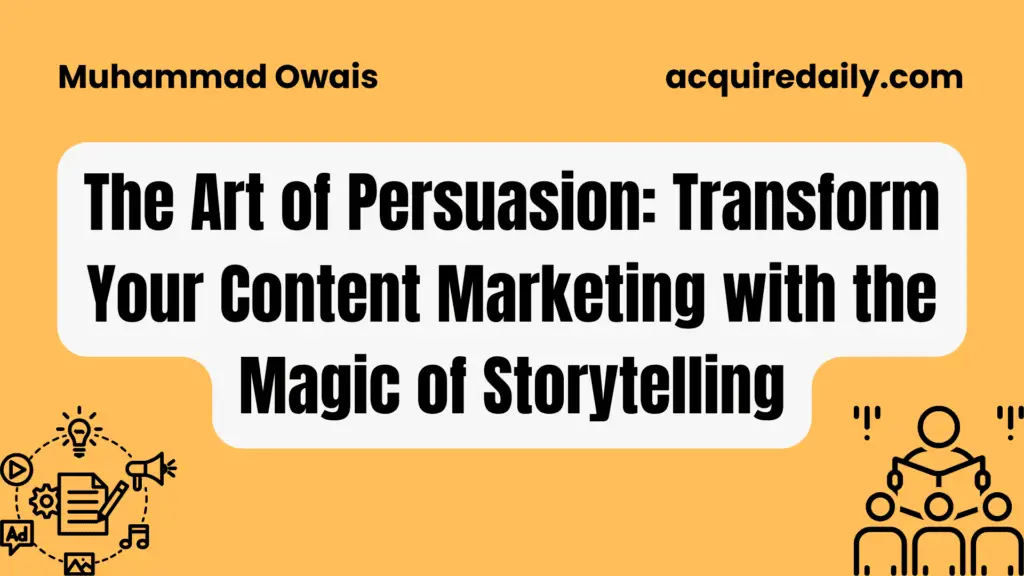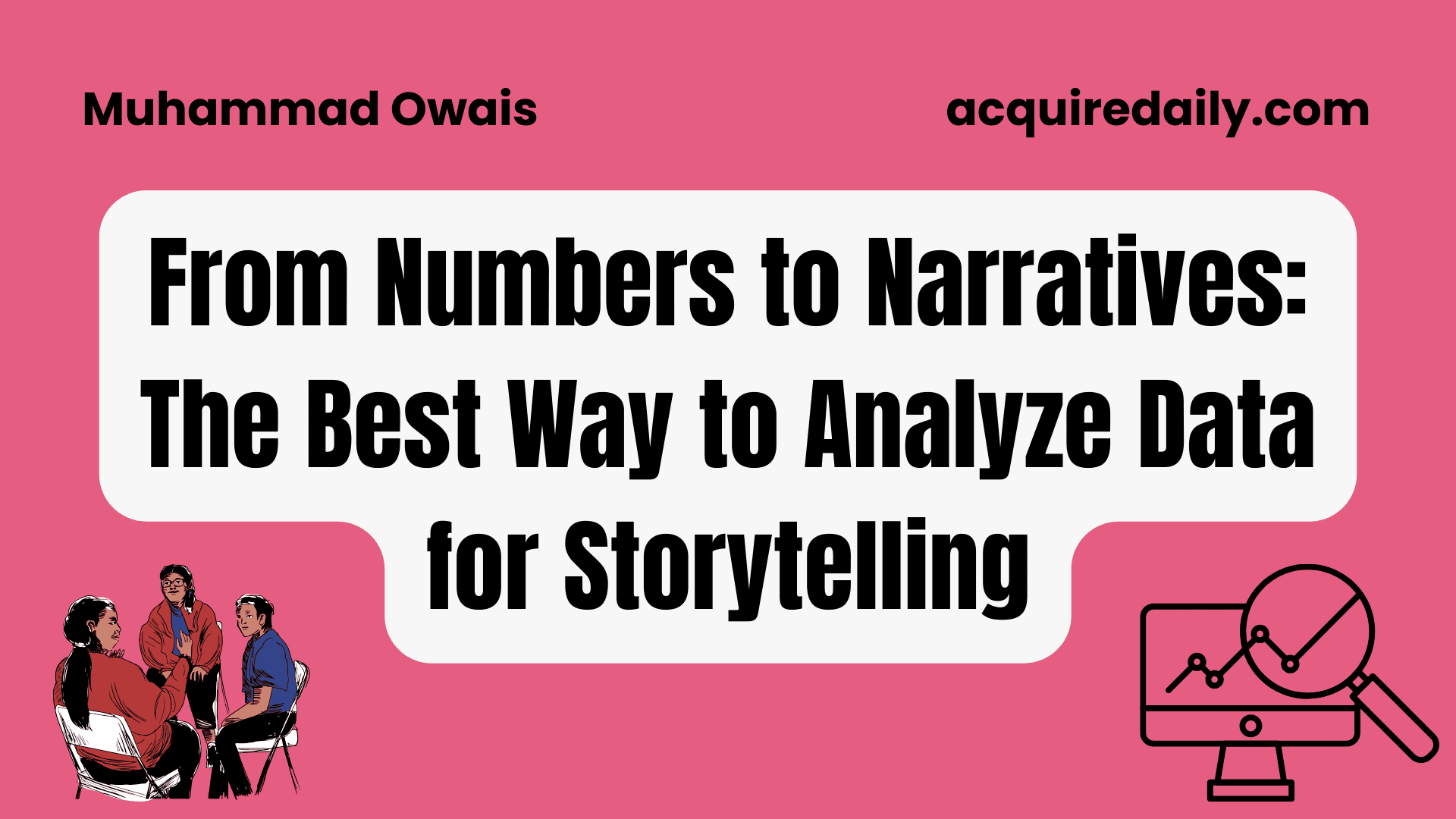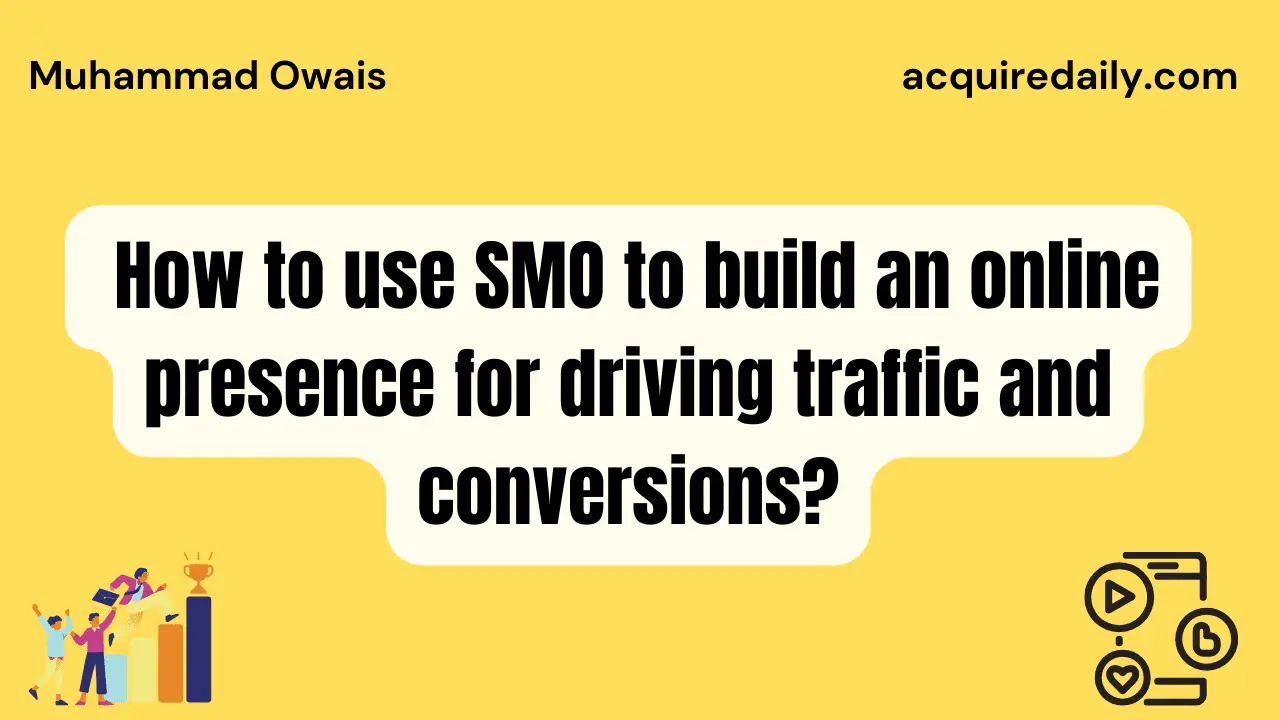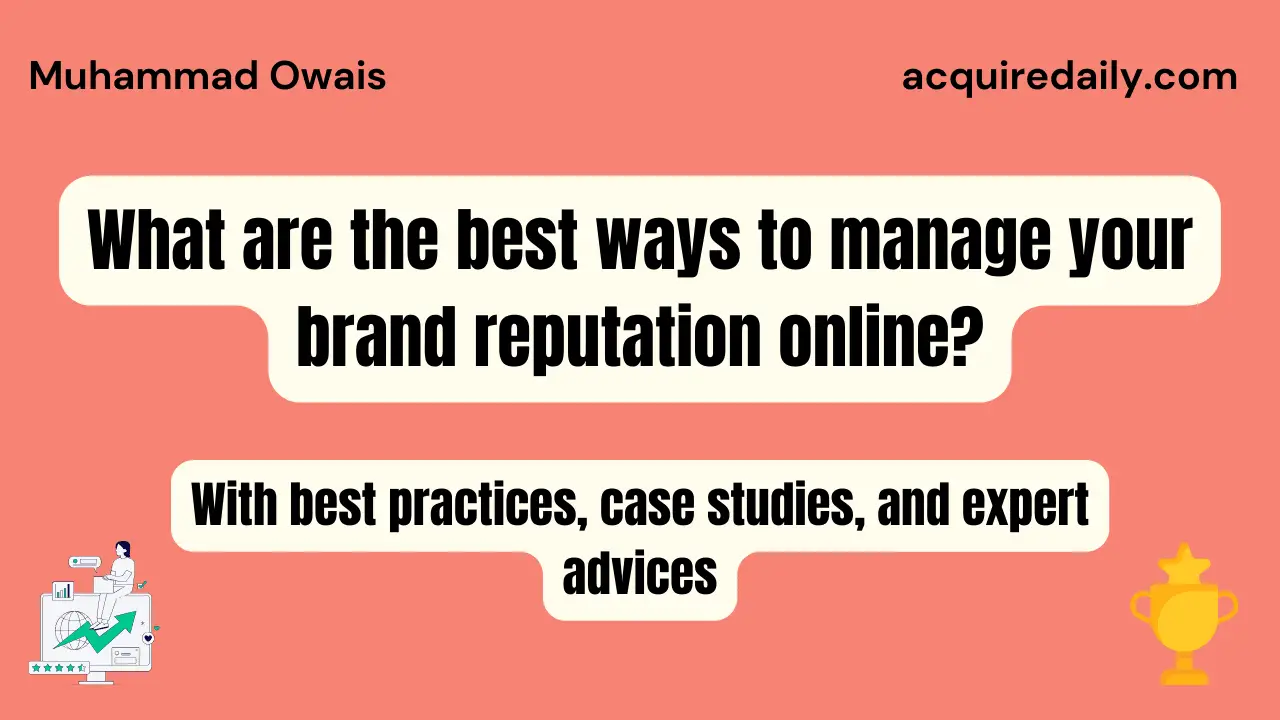Storytelling is one of the most powerful tools in a content marketer’s toolkit. At its core, great content marketing is about creating compelling stories that engage your audience on an emotional level. By mastering the art of storytelling, you can elevate your content from information to inspiration, driving higher engagement, trust, and conversions.
Table of Contents
- Introduction to Storytelling in Content Marketing
- Why Storytelling Matters in Content Marketing
- Choosing the Right Storytelling Techniques
- Creating Your Brand’s Story
- Define Your Core Message
- Choose Your Content Format and Channels
- Tell a Compelling Brand Story
- Create Valuable Content Around the Story
- Measure Results and Improve
- The Ethical Aspects of Storytelling
- Case Studies: Successful Storytelling in Content Marketing
- The Future of Storytelling in Content Marketing
- Conclusion: Mastering the Art of Persuasion Through Storytelling
- Frequently Asked Questions – FAQs
Introduction to Storytelling in Content Marketing
Storytelling has been used since ancient times to share knowledge, instill cultural values, and bring people together around a common narrative. In a content marketing context, storytelling lets you form an emotional bond with your readers, persuading them to see the value in your brand, products, or services.
Rather than simply stating facts and features, storytelling shows how your brand fits into your customers’ lives in a meaningful way. Stories help your audience imagine what their life could be like with your product or service. An effective story draws the reader in, using narrative elements like characters, setting, and plot to showcase the value you provide.
Done right, storytelling in your content marketing strategy can:
- Boost engagement, shares, and readership of your content
- Help your brand build trust and authority with your target audience
- Increase conversion rates by persuading readers to take action
- Differentiate your brand from competitors by showcasing your unique values and personality
But how exactly can you incorporate compelling stories into your own content? Let’s explore some key techniques for mastering storytelling in your marketing.
Why Storytelling Matters in Content Marketing
Before diving into the how-to, it’s important to understand why storytelling is so crucial for captivating your audience.
Exploring the Psychological Aspects of Storytelling
Human beings are inherently drawn to stories. Our brains are wired to think in narratives as a way of interpreting the world and relating to others. When you hear a story, your brain releases oxytocin, the “love hormone” associated with forming social bonds and empathy. This allows the storyteller to tap into the reader’s emotions.
Neuroscience research shows that we are far more likely to remember information when it’s wrapped in a story. Stories also help build neural bridges in our brains, so we can put ourselves in the shoes of the characters and imagine what it would be like if we experienced what they did.
By aligning your brand’s story with your customers’ values and desires, you create neural connections between your product or service and your audience’s concept of an ideal life. This lays the groundwork for an emotional sale.
Building an Emotional Connection With Your Audience
While facts and statistics have their place, stories are what truly stick in our minds and hearts. People are drawn to buy from brands they feel a personal connection with.
Storytelling gives you a way to shift from talking about product features to sharing your brand purpose and values. For example, TOMS Shoes tells the story of how its founders were inspired to help provide shoes for children in need. This mission taps into readers’ compassion and desire to make a difference.
Engaging stories also allow you to highlight your customers as the heroes of the tale. Sharing their journey with your brand makes audiences imagine themselves in that starring role. This puts them in the right mindset to become loyal customers too.
No matter what you sell, there is always an underlying human story you can tell about creating something meaningful for people. Find this purpose-driven narrative and make it shine.
Choosing the Right Storytelling Techniques
Now that you appreciate the immense power of storytelling for your content, how can you craft a compelling tale? Here are some techniques to employ:
Identify Storytelling Techniques That Resonate With Your Target Audience
While human beings universally enjoy stories, certain types of narratives resonate more strongly with different demographics. Know who you want your story to impact and shape it to appeal specifically to them.
For example, Gen Z and Millennials may be more receptive to stories told through video or interactive content. Baby Boomers may prefer a hero’s journey story structure that features more traditional values. Identify your audience’s preferences and fine-tune your stories accordingly.
Incorporate Elements Like Character Development and Plot Structure
The best stories feature multidimensional characters that readers can empathize with as they journey through a plot arc. Introduce a hero that the audience connects with and who demonstrates the change your brand can create for them. Create a fellowship of characters who help the hero along on their quest, like your employees or current customers.
Incorporate classic plot elements like a call to adventure, tests, and triumphs, culminated by the hero’s transformation through your brand. This age-old story structure still compels modern audiences. Study storytelling classics and frameworks like The Hero’s Journey as you craft your own narrative.
Creating Your Brand’s Story
Now that you understand the elements of effective storytelling, here is a step-by-step process for integrating persuasive narratives into your content marketing:
Understand Your Audience
As mentioned above, your brand’s story must resonate with your specific audience and where they are at in their customer journey. Really get to know your different buyer personas so you can tell stories that appeal directly to their values, hopes, dreams, and pain points.
Define Your Core Message
Before telling your brand story, distill what key message you want readers to take away. What is the one thing you most want them to remember or feel? Your core message should focus on the value you provide customers rather than just hyping your brand.
Choose Your Content Format and Channels
Stories can be told across all content formats and platforms. Consider which types of content and distribution channels allow you to most powerfully connect with your target audience. Would your brand story shine best as an Instagram Reel or a long-form blog post? As a video series or podcast?
Choose formats that allow you to incorporate both narrative elements and good SEO to attract your audience.
Tell a Compelling Brand Story
With your audience, message, and platforms selected, it’s time to craft your story. Outline the narrative arc, characters, and plot points that will take your audience on an emotional journey. Focus on showing rather than telling your brand value, letting the story do the persuasive work.
Create Valuable Content Around the Story
Your brand story shouldn’t exist in isolation. Incorporate it into content pieces that also share educational insights, tips, and advice your audience will find valuable. Find opportunities to organically integrate your story as you produce content on topics your audience cares about. The story should enhance the content, not overshadow it.
Measure Results and Improve
Analyze metrics like engagement rate, conversions, and lead generation to see how your storytelling content performs vs. other pieces. Look for opportunities to A/B test content and fine-tune your stories based on what resonates most powerfully. Be willing to evolve your narratives and techniques for greater impact.
The Ethical Aspects of Storytelling
While storytelling is a powerful tool, it also comes with ethical responsibilities. Brands must find the right balance between persuasion and transparency. Some key principles:
Balance Persuasion With Authenticity
Don’t manufacture stories or distort facts just to manipulate emotions. While you’re guiding your audience to imagine life with your brand, ensure you aren’t making false promises. Back up your narrative with real proof points and testimonials.
Avoid Pitfalls Like Stereotyping or Cultural Appropriation
Stories often rely on shared cultural understanding and symbols. Take care not to incorporate damaging tropes or appropriate stories from cultures that are not your own. Ensure your brand’s stories are ethnically appropriate and inclusive.
Focus on Customers’ Needs vs. Yours
It can be tempting to tell stories mainly about how great your brand is. But remember, the hero is your customer, not you! Keep the focus on their transformation. Support them in their journey rather than making it all about your company.
Case Studies: Successful Storytelling in Content Marketing
Let’s look at some real-world examples of how top brands effectively employ storytelling content marketing:
Dove – Real Beauty Campaign
Dove transformed its brand storytelling by shifting from superficial messages about physical beauty to empowering stories about self-esteem. Their award-winning “Real Beauty” campaign shared stories and images of real women of all ages, sizes, and ethnicities, accompanied by empowering messages about rejecting beauty stereotypes.
This storytelling successfully tapped into its audience’s aspirations, resulting in massive brand growth and becoming one of the most iconic and long-running marketing campaigns.
Airbnb – Experiences
Airbnb found a way to leverage storytelling in a hugely successful content initiative: Airbnb Experiences. This program allows local hosts to offer unique activities like walking tours, cooking classes, or cultural immersion based on their passions and expertise.
Experiences tell memorable stories of real people and places, allowing travelers to live like a local. The authentic narratives told by each Experience host helps travelers form an emotional bond with previously unknown destinations and cultures.
Patagonia – Worn Wear
Outdoor apparel company Patagonia shares customer stories as part of its “Worn Wear” program that encourages repairing and sharing gear. Patagonia customers submit stories and photos about their favorite trusted Patagonia jacket that has lasted for decades.
These authentic tales reinforce the brand’s values of sustainability and high-quality products. At the same time, customers become part of the Patagonia tribe by sharing their own adventures.
The Future of Storytelling in Content Marketing
Storytelling itself remains timeless, but new technologies are emerging that forward-thinking brands should keep on their radar.
- Interactive content like games, quizzes, and calculators that allow for user choice and input into the story
- Immersive storytelling with VR and AR that lets audiences actively participate in branded narratives
- Personalized storytelling shaped by AI to customize narratives based on an individual’s preferences
- Generative content creation tools that can produce basic story outlines and AI-assisted writing that can help craft and enhance storytelling
To stay ahead, continue studying narrative techniques across disciplines like screenwriting, journalism, oral histories, and role-playing games. Look for ways to ethically and meaningfully incorporate new tech to create stories that emotionally resonate.
Conclusion: Mastering the Art of Persuasion Through Storytelling
Storytelling is no mere nicety – it’s an integral element of successful content marketing. Stories establish an emotional link between your brand and your audience, persuading them to see themselves as the heroes of your brand narrative.
By tapping into the remarkable power of stories, you can transform your content from dry information to an experience that moves people. Work diligently to craft compelling tales of transformation that elevate your readers. Let your story add value to their lives as it builds lasting affinity for your brand.
Mastering storytelling as part of your digital marketing and content strategy takes creativity, care, and practice. But those who dedicate themselves to capturing and enhancing the human experiences that underlie every brand will reap immense rewards. Embrace your calling as a storyteller, and transform your content from good to extraordinary.
Frequently Asked Questions – FAQs
What are some examples of effective storytelling in content marketing?
Some of the most effective brand storytelling examples include Dove’s Real Beauty campaign, Airbnb’s Experiences, and Patagonia’s Worn Wear customer stories. These campaigns use compelling narratives to connect with audiences on an emotional level and convey brand values.
How can I identify the right stories to tell for my brand?
Start by understanding your key buyer personas in-depth. Look for insights into their values, dreams, and pain points. Then identify stories from your brand heritage or customer experiences that tap into those emotions and desires. Focus on tales that highlight the human impact of what you do.
What are some different formats for telling brand stories?
Stories can be woven into all types of content – long-form blog posts, social media posts, videos, podcasts, etc. Interactive and visual formats like quizzes or comics can also engage audiences. Choose formats based on your audience’s preferences.
How can I measure the impact of storytelling content?
Look at engagement metrics like time on page, shares, clicks, and conversions. A/B test storytelling content against non-stories. Collect qualitative data by asking customers how posts made them feel and if stories increased brand affinity.
What makes an ethical brand story?
Ethical brand stories are authentic, avoid stereotypes, focus on customers, not the brand, and balance persuasion with transparency. They should inspire audiences without false promises.
How can I improve my storytelling skills for content marketing?
Study storytelling frameworks and narrative devices from fields like screenwriting and journalism. Analyze stories that emotionally resonate with you. Practice telling stories based on customer research. Get feedback from editors. Consume stories in all formats.
What emerging tech should I use for stories?
Consider interactive content, VR/AR, personalized stories via AI, generative writing tools, and more. But focus first on mastering traditional narrative techniques. Tech should enhance stories, not replace storytelling skills.
You May Also Like
7 Psychology Concepts To Improve Your Marketing
What Are The Best Ways To Manage Your Brand Reputation Online?
How To Sell Your Craft (Without Being Salesy)? Crafting An Honest Personal Pitch.








